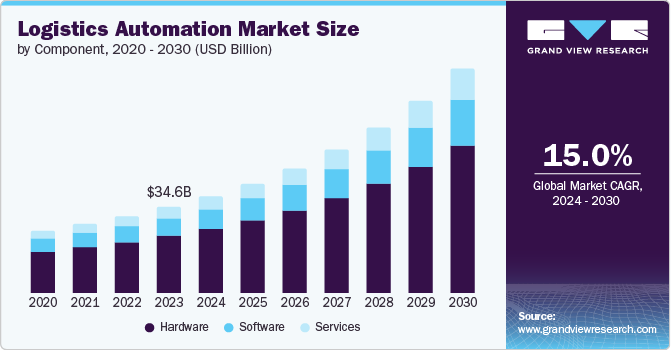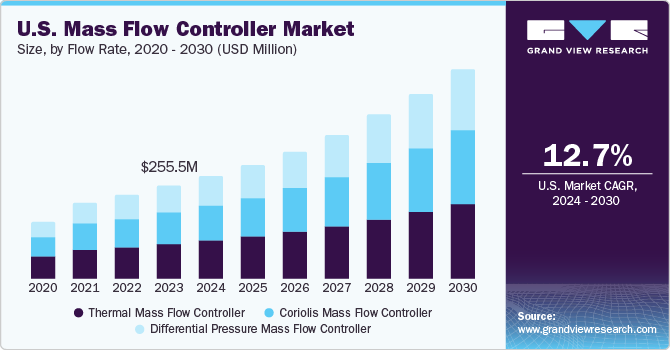Logistics Automation Market Size, Share & Trends Analysis growing at a CAGR of 14.7% from 2024 to 2030

The global logistics automation market size was estimated at USD 34,556.3 million in 2023 and is projected to reach USD 90,001.1 million by 2030, growing at a CAGR of 14.7% from 2024 to 2030. Logistics automation includes hardware and software solutions to automate logistics processes such as transport, storage, retrieval, and data management processes.
Key Market Trends & Insights
- In terms of region, North America was the largest revenue generating market in 2023.
- Country-wise, South Africa is expected to register the highest CAGR from 2024 to 2030.
- In terms of segment, hardware accounted for a revenue of USD 23,025.0 million in 2023.
- Services is the most lucrative component segment registering the fastest growth during the forecast period.
Market Size & Forecast
- 2023 Market Size: USD 34,556.3 Million
- 2030 Projected Market Size: USD 90,001.1 Million
- CAGR (2024-2030): 14.7%
- North America: Largest market in 2023
Request a free sample copy or view report summary: https://www.grandviewresearch.com/industry-analysis/logistics-automation-market-report/request/rs1
Automating these processes improves efficiency, minimizes errors, and reduces the turnaround time. Automation solutions aid in scaling up businesses as larger volumes can be easily managed with autonomous robots, conveyor systems, and automated storage systems.
The growing consumer inclination toward online shopping and rising demand for short delivery timelines is one of the major factors fueling the market’s growth. High consumer demands have led to a surge in fulfillment centers for last-mile and quick deliveries. The fulfillment centers are incrementally adopting automation from mechanized support to operator-free equipment. As automated vehicle and robotics technologies mature with time, their applications in logistics and warehousing will broaden significantly and create growth opportunities for the target market during the forecast period.
The logistics automation sector faces several challenges, including intense market competition, a lack of industry standardization, and a shortage of skilled labor needed to operate advanced systems. The complexity of automation devices and software demands specific expertise, and the scarcity of trained personnel, particularly in developing countries like India and China, can hinder market growth. Additionally, the absence of standardization complicates the creation of uniform supply chain solutions, resulting in high costs for developing specialized systems.






